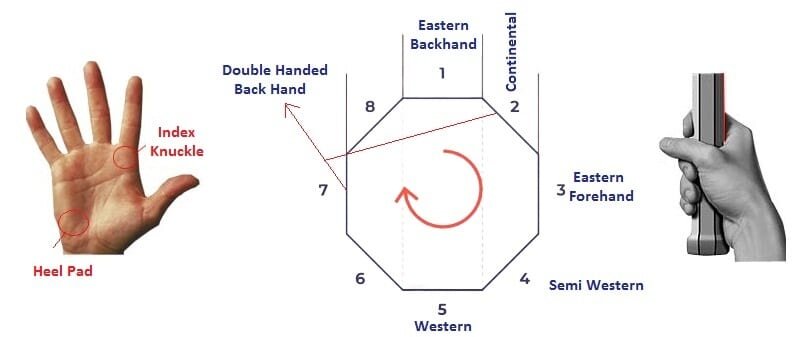The Forehand
By: Mike Sprouse/TennisCT
The tennis forehand is usually the first tennis stroke anyone learns since it is performed with one’s dominant arm. If you’re right handed, you would hit the forehand with your right arm and wrist. If you’re left handed, you would hit the forehand with your left arm and wrist. Some people are ambidextrous and can use both hands equally well. For your forehand, use the same arm that you throw a ball with.
The forehand swing is performed while the palm of the dominant hand that is holding the racket faces forward. Essentially, the tennis forehand is made by swinging the racket across one's body in the direction of where one wants to land the ball.
There are 4 key things to keep in mind when hitting a forehand:
1) Positioning or stance
Typically in the early stages of learning the technique, you would stand perpendicular to the net with your non-dominant shoulder pointed at the net. This is referred to as a “closed stance”. Sometimes, you’ll see pros and other great players hitting forehands with an “open stance” where their body is open and facing the net. Depending on your level, you might hit forehands with either or both type of stance.
2) Backswing
A proper backswing is really about upper body rotation. Keep in mind that the arm you use to take the racquet back should actually be in harmony with the hips and shoulders turning first. You know you have completed the set-up of the swing properly if your shoulder is closed (with your body facing the side of the court and the shoulder is pointed at the net).
3) Forward Swing and Contact with the Ball
This part of the swing is all about weight transfer. You’re taking the energy and torque from your backswing (and shoulder and hip turn) and transferring it through the tennis ball and towards your target. A good thing to keep in mind here is that to assist with your weight transfer, you should step towards your target with the non-dominant or opposite foot. For right handers, you would step forward with the left foot.
Two other points are important here: one, your swing should be slightly low-to-high. In other words, from the backswing position, you should start the swing below the ball and finish the swing with the racquet up high; two, the point where you contact the ball should be slightly in front of your body – not behind it, and not too far out in front. The contact point should be a comfortable distance away from your body.
4) Follow Through
After you connect with the tennis ball, continue your swing through the ball with the racquet ending up high. There are a few images here that people use which work well: one, you can imagine placing the racquet into your non-dominant hand (or “catching it”) after impact; and/or two, you can imagine scratching your back with your racquet over your non-dominant shoulder after following through.
Other Tips for the Forehand:
Positioning
The main mistake for most players starts with poor positioning when they hit the ball. Do not hit the ball when it is very far from you, in either the sideways direction or too far in front of you. You also have to avoid hitting a ball too close to your body. The arm should feel comfortable, not too stretched out but you shouldn’t feel your elbow uncomfortably tucked into your body either.
Another thing that takes practice for players is that contact point we mentioned above. Think of making contact with the tennis ball nearest your front hip, just slightly in front of your body. If you’re a right-hander using a closed stance, you’d make contact with the ball nearest your left hip.
Hitting “up” / the racquet face
As we said, the swing is low-to-high. It doesn’t mean that you open your racquet face and hit the ball straight up into the air. The object is to hit a shot that rises above the net and lands on the other side. In order to do that, your racquet face should be slightly open as you make a natural low to high swing. Once you get comfortable with the shot, you’ll start to feel a brushing effect of topspin between the ball and the racket.
A Quick Word on Grips (Western, Eastern, Continental):
The eastern forehand grip is easy to learn for most players, and is the grip we recommend you start with. As you get more advanced and utilize heavier topspin, you can try the semi-western and western grips.
The eastern grip is depicted in the diagram, and with your wrist in a straight position you will be able to hit the ball in a straight path.
The western and semi-western forehand tennis grips are normally used by players if the court they are playing on allows high bouncing of the ball. This is to allow them to hit the ball at a higher point of contact when needed. If you do this, just make sure that the angle of your racket is kept straight to avoid errors or wide ball (outside the line).
Another tennis grip which can be used in a forehand shot is the continental forehand grip. Generally, this grip is used by players when they are playing in a tennis court that produces low ball bounce such as grass court. Make sure to maintain a straight wrist so that the ball travels in an upward motion avoiding the net.
Take a Free Lesson – Follow us on Social




